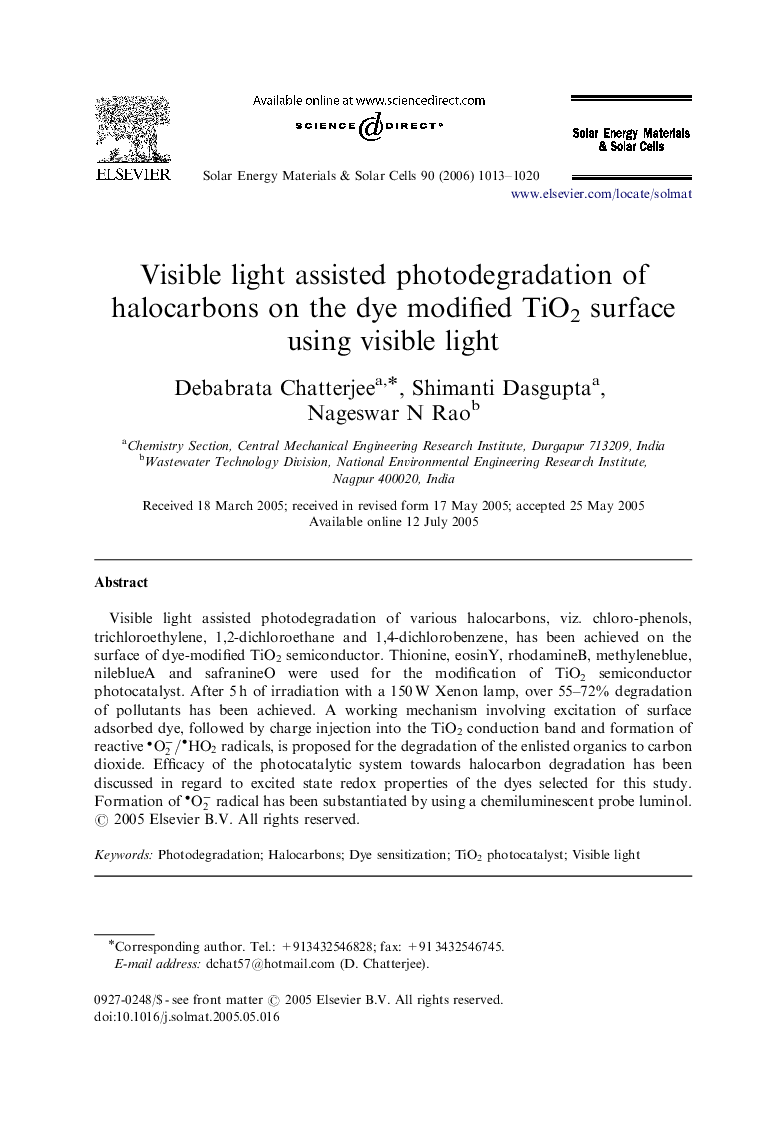| Article ID | Journal | Published Year | Pages | File Type |
|---|---|---|---|---|
| 81297 | Solar Energy Materials and Solar Cells | 2006 | 8 Pages |
Visible light assisted photodegradation of various halocarbons, viz. chloro-phenols, trichloroethylene, 1,2-dichloroethane and 1,4-dichlorobenzene, has been achieved on the surface of dye-modified TiO2 semiconductor. Thionine, eosinY, rhodamineB, methyleneblue, nileblueA and safranineO were used for the modification of TiO2 semiconductor photocatalyst. After 5 h of irradiation with a 150 W Xenon lamp, over 55–72% degradation of pollutants has been achieved. A working mechanism involving excitation of surface adsorbed dye, followed by charge injection into the TiO2 conduction band and formation of reactive •O2-/•HO2 radicals, is proposed for the degradation of the enlisted organics to carbon dioxide. Efficacy of the photocatalytic system towards halocarbon degradation has been discussed in regard to excited state redox properties of the dyes selected for this study. Formation of •O2- radical has been substantiated by using a chemiluminescent probe luminol.
